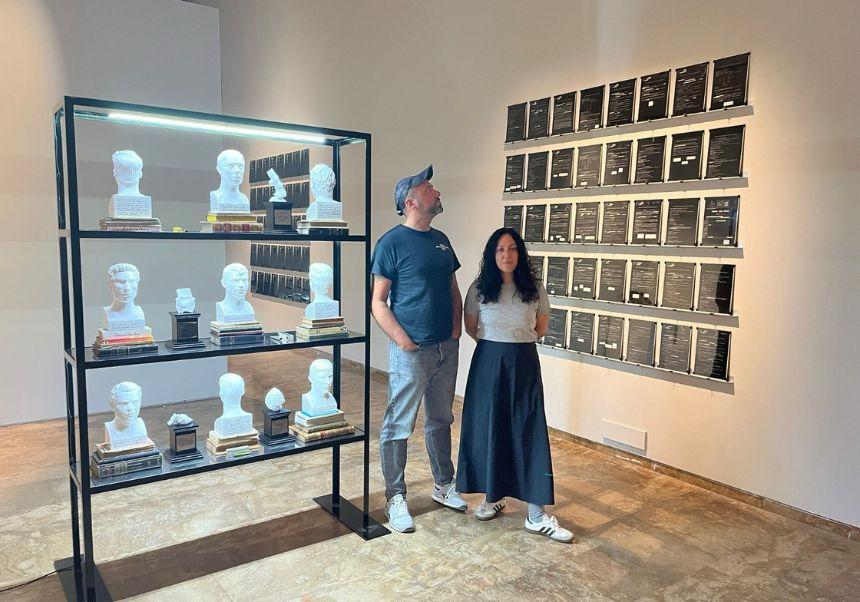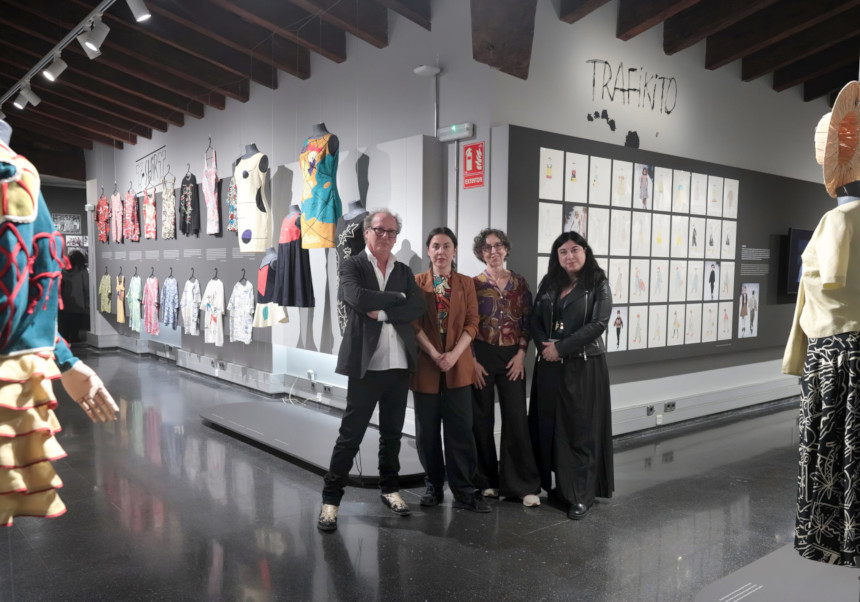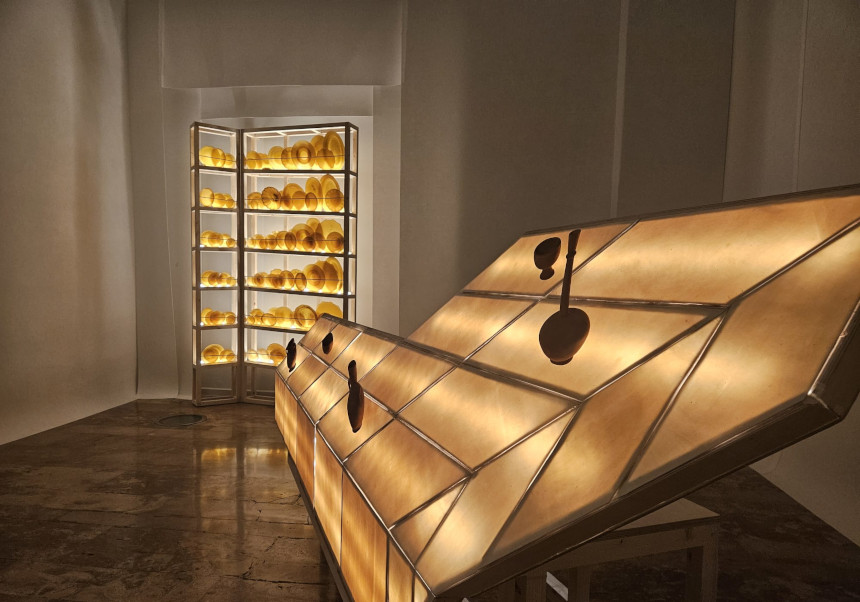La Nau Cultural Centre inaugurates an exhibition about criminalisation of sexuality by the legislation, science and religion
- Office of the Vice-Principal for Culture and Society
- May 21st, 2025

La Nau Cultural Centre of the Universitat de València inaugurates on Thursday, 22 May, at 8:00pm, the exhibition ‘Higiene pública: la sociedad como cuerpo enfermo’. It’s a project made by the artist Daniel Gasol, curated by Patricia Sorroche Quesada and produced by the Universitat de València, that will be available for visits until 31 August, in the Estudi General Hall of La Nau.
With this exhibition, a line of exhibitions will be inaugurated. La Nau has programmed them under the title: ‘El valor de la diversidad: arte, restitución y memoria’. The following exhibition will be: ‘Miguel de Molina: quiero ser diferente’, that will be inaugurated 30 June in the Acadèmia Room of the building.
‘Higiene pública: la sociedad como cuerpo enfermo’ is a project build around the artist Daniel Gasol work, reflecting, since the present, about the relationship between legislation, science and religion that criminalises, medicates and punishes those who do not comply with the normativity of the capital system, with the condition of being “upright citizens”. From the analysis of Vagos y Maleantes (1933-1970) and Peligrosidad Social (1970-1995) codes and laws, the projects examines how both laws addressed the topics of gender, race and social class by trying to manage, regulate and discipline desires and sexual-affective relationships between individuals. In Gasol’s works the archive, the installation, the performatic and audivisual documents mix together. His works come from an intersectional space that unfolds as an artistic-medical-scientific document as many voices were not just studied and displayed as the paradigm of the “not being” and, therefore, “what to be”, but rather their existences were turned into pathologies, which tried to be corrected via treatments, therapies or even imprisonments within a system of social and political control.
The exhibition is composed by diverse locations realised ex profeso by the artist for this sample, like a gallery of pathologic anatomies with busts and medical and police reports; a big installation that reproduces medical metal folders of what was considered as a “healthy sexual life”; intervened pictures of different nature; reviews and documentation of the framed period; reproduction of surgical tools of sexual correction; clinical reports of homosexuals as well as contract files for homosexuality of riskiness intervened and always conserving the anonymity. Structured in four sections, and with the goal of raising awareness, at the end of the route, the public will have the opportunity of manipulating and consulting replicas of this contract files.
Ever since the approval of the Vagos y Maleantes Law by the Cortes of the Second Republic, known as La Gandula, they wanted to legislate and control a social mass composed of homeless, nomads or other life forms, with the objective of preventing “antisocial” behaviours through correction treatments via fines or concentration camps. Later on, the Francoist military occupation would maintain the law through its ideological-legislative purification after some modifications, replacing it with the Ley de Peligrosidad Social (1970) until its abolition in 1995. Both laws are sustained on the 19th century ideological current of Social Hygiene Movement which, under the pretence of maintaining specific health standards in the cities, was used to catalogue, neutralise and homogenize a bourgeoisie society model based on morality, capitalism as the engine of History and the dissident pathologisation that has permeated it to the present day.
Dangerous estate
Thus, the Vagos y Maleantes law was not one to penalise crimes, but rather it tried to prevent them through criminological currents and scientific practices such as anthropometry, craniology or phrenology, which aspired to identify and classify “dangerous” individuals through “abnormal” somatic and psychological characteristics which needed to be treated and corrected. As a result of the triangulation between science, legislation and religion that make up the great stories of the modern age, the State designed the Vagos y Maleantes and Peligrosidad Social laws as means to discipline, from the exercise of work, dangerous individuals such as agricultural colonies, custody centres or casas de templanza (“therapeutic” asylums) to work with the more than 2400 records opened during the first month alone.
With the legislation modification and the religious, social and scientific changes that took place during the validity of both laws, we observe that during the democratic period the number of records was reduced considerably, although, nonetheless, nowadays we still find certain ideological remains in the form of treatments, diagnosis, moral judgements, pathologisations, procedures or other forms of order which deeply condition how we build the so called legitimate knowledge, our ways of operating, connecting and existing. The exhibition shows how laws affected a great part of the country and, with time, puts it in the specific case of the province of Valencia.
Inside the mark of this exhibition it’s organised a Congreso Internacional: ‘Revolver la memoria queer y trans. Archivos y periferias‘, a project that reunites many European Universities, inside the framework of the research, with the goal of giving visibility to the peripheries, far from that considered “normal and hegemonic” and to the “contra-archives”, facing the archives identified as spaces or organised knowledge and, therefore, also of power.
Researchers coming from different countries of Europe, queer and trans activists, as well as artists coming from diverse disciplines will meet until Friday, 23 May, in La Nau to propose specific cases of rebuilding of this memories and archives.
With that, in this program they have counted with many proposals developed inside the Valencian Community, such as El Punt, espai de lliure aprenentatge, specialists and critics such as Juan Vicente Aliaga, whose work is centred in sexual diversity, the feminist project and the role of gender in the contemporary artistic work and constitute a referent inside queer studies, or the researcher, Joaquín Artime, who just presented a project from his doctoral thesis named ‘Archivo de Artistas Queer en Valencia 1975-2024’.
All information of the Congress on this hyperlink.
Free registrations through this link.
More information:
File in: Cultura , Exposicions , Centre Cultural La Nau









